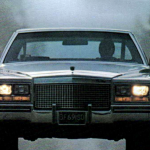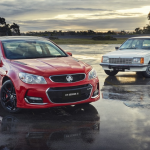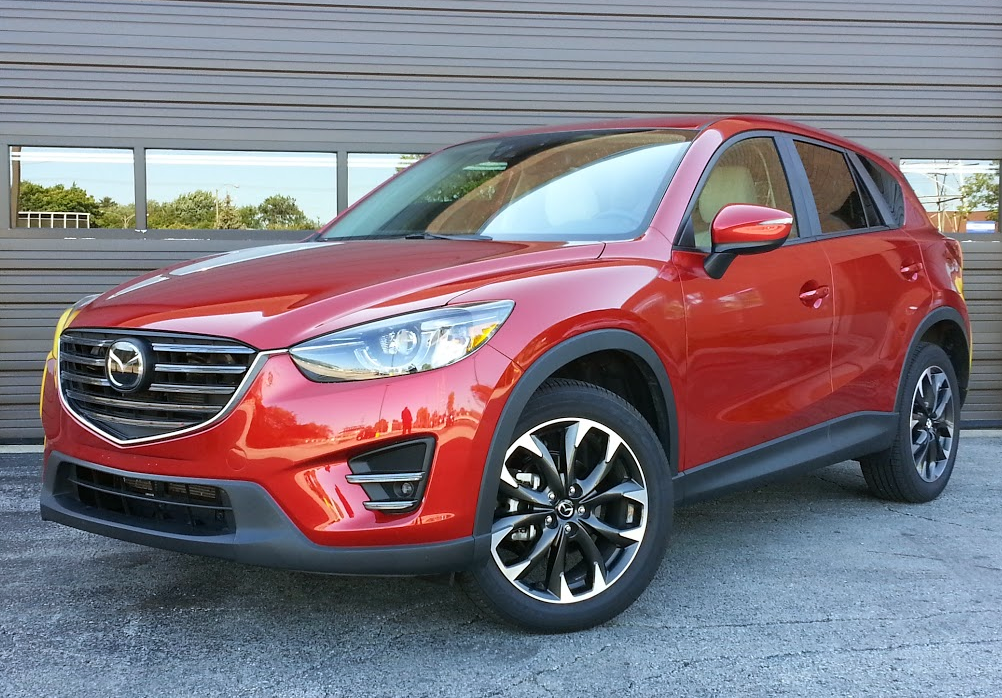
2016 Mazda CX-5 Grand Touring AWD 
Class: Compact Crossover
Miles Driven: 248
Fuel Used: 9.1 gallons
Driving mix: 65% city, 35% highway
Real-world fuel economy: 27.3 mpg
EPA-estimated fuel economy: 24/30/26 (city, highway, combined)
Base price: $29,470 (not including $880 destination charge)
| CG Report Card | |
|---|---|
| Room and Comfort | B+ |
| Power and Performance | B- |
| Fit and Finish | A- |
| Fuel Economy | A- |
| Value | A- |
| Report-card grades are derived from a consensus of test-driver evaluations. All grades are versus other vehicles in the same class. Value grade is for specific trim level evaluated, and may not reflect Consumer Guide's impressions of the entire model lineup. | |
Options on test car: Cargo mat ($60), Soul Red Metallic paint ($300), rear bumper guard ($100), retractable cargo cover ($200), satellite radio ($125), i-Activsense Package ($1500), Tech Package ($1505)
Price as tested: $34,140
Quick Hits
The great: Premium cabin, sporty handling, impressive fuel economy
The good: Sufficient power, loads of available safety equipment
The not so good: Limited rear-seat space
Check out the entire Mazda lineup
John Biel
Mazda has set out to make some running improvements to the CX-5 compact crossover for 2016, and this comes on the heels of a quiet 2015 model year in which it pretty much left well enough alone. Not that what it had for ’15 was bad—Consumer Guide® had the CX-5 as a co-“Best Buy” in the class.
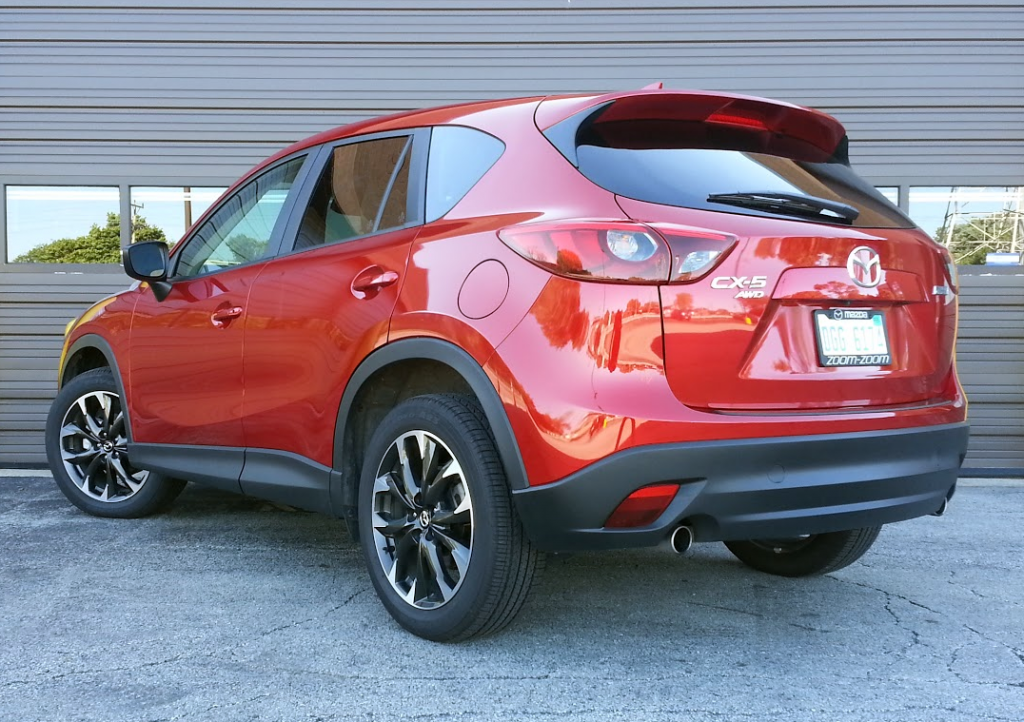
What’s new for ’16? Minor exterior touch-ups on the grille and LED taillights, some nicer interior materials, an electric emergency-brake button that does away with space-robbing handle, and Mazda Connect, which uses one of those control-knob thingies on the console that modern automakers equate with technological advancement. “Everything is easy to find and use with the Commander control knob or a few taps on the large touch screen,” Mazda says of its dial-in control system. One man’s opinion: Why have 2 ways to access information when a single good one would be more direct?
Test Drive: 2015 Toyota RAV4 XLE
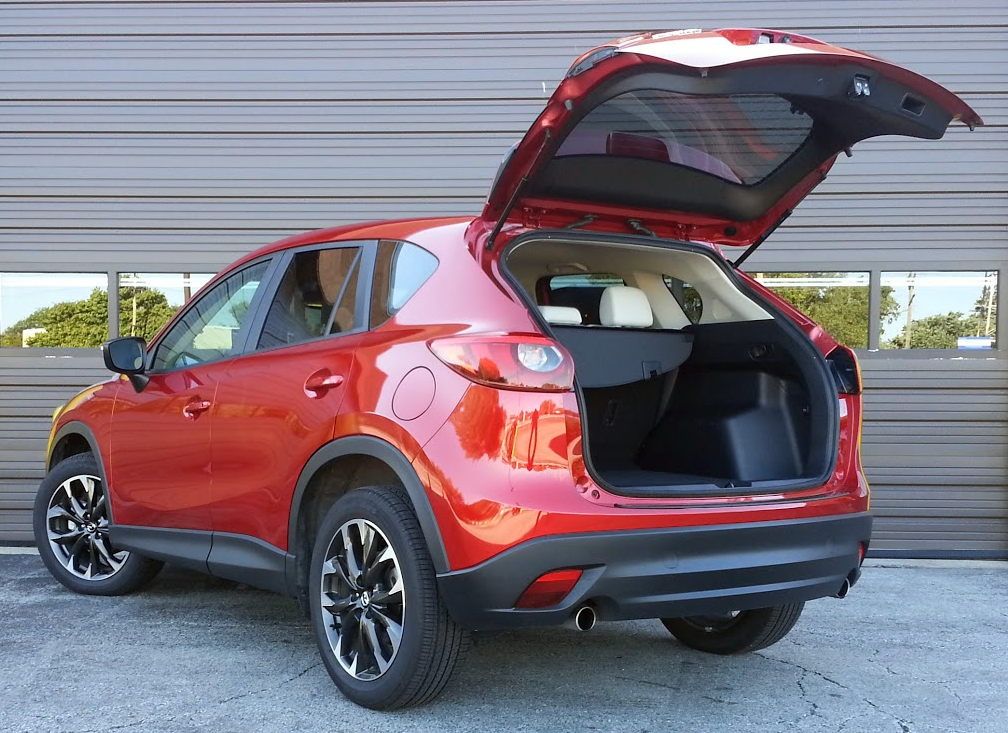
Displays for various systems show up on the central 7-inch touchscreen, and there’s a menu bar of function icons along the bottom of the screen, but they can be slow to respond to a tapped-in call to action. (This tester never did find an actual On/Off button for the radio. The next best thing was turning the volume to 0, but the radio still was on.) The rotating dial on the console also scrolls through the display choices arcing across the screen, but to keep up where you are in the menu of categories requires some attention better left to actual driving. Thankfully, the separate climate controls are much easier to use.
Of course, nobody buys a vehicle solely to play the radio. Here’s what else the CX-5 brings to the party:
- Passenger room. Front seats present good head and leg room. The seats will track back to accommodate taller passengers, and drivers get a dead pedal on which to rest their left foot. Rear passengers have the potential for comfortable leg room—if the front folks don’t need too much of it. Two adults or 3 children will fit across the back seat. Head room in the rear is good, and entry and exit are uncomplicated. All roof pillars are somewhat thick, diminishing visibility.
- Ambience. Seats are comfortable, and materials are nice in the top-end CX-5 Grand Touring that CG tested, with lots of soft surfaces throughout the cabin.
- Convenience. Front passengers get large door pockets, a good-sized glove box, 2 open cup holders in the console, and a deep but not especially wide—or long—covered console box with a power point inside. Media-device inputs are concentrated in an open area at the front of the console. Rear passengers get small door pockets, pouches on the backs of the front seats, and 2 cup holders in the center arm rest.
-
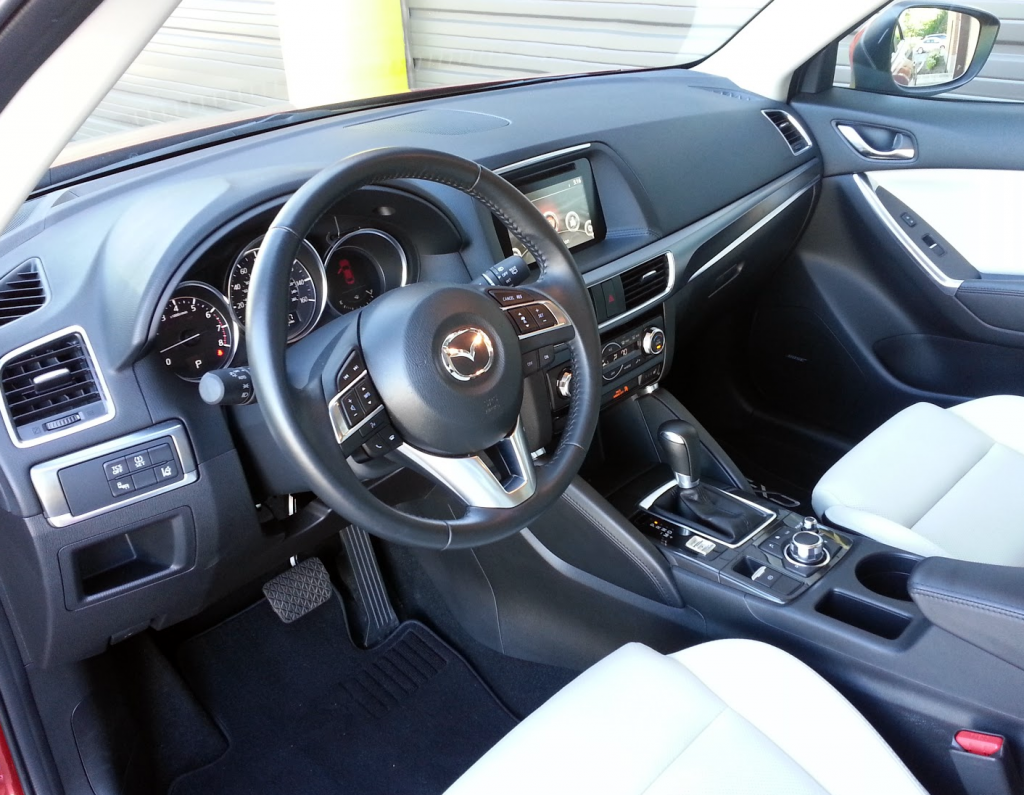
In Grand Touring guise, CX-5 presents as a premium-level vehicle. Ample cargo area. The flat floor loads at bumper height. Small open bins for incidentals are found at both rear corners. The sides contain a power point, and levers to remotely release the 40/20/40 rear seats and center arm rest (which can function as a pass-through when retracted independently of the seats). Note that when the seats are down, there’s a slight offset between them and the cargo floor.
- Performance. In general, power isn’t bad from the 2.5-liter 184-horsepower 4-cylinder engine. However, clicking the “Sport” switch on the console does get more giddy-up, with a little sharper throttle response and crisper shifting. Pulling out to pass in base mode came with a frustrating wait for a downshift from the 6-speed automatic transmission. As for fuel economy, the all-wheel-drive CX-5 with this powerteam is EPA-rated at 25 mpg in the city, 30 on the highway, and 26 combined. This driver averaged 25.99 mpg from a test stint of 114.6 miles, 56 percent of it in city conditions.
- Ride and handling. Ride was quite good over various road surfaces; steering was cooperative for nimble on-road handling and fine parking-lot maneuverability.
Test Drive: 2015 Nissan Rogue SV
As a top-of-the-heap Grand Touring with all-wheel drive, the ’16 CX-5 starts at $29,470. That buys 19-inch alloy wheels; leather sport seats (heated in front), and a leather-wrapped steering wheel on a tilt/telescoping column; an 8-way power driver’s seat; dual-zone automatic climate control; a 9-speaker Bose audio system; Bluetooth phone and audio connectivity; and a rearview camera. However, the example that we drove was considerably more—$34,140 delivered—mostly due to 2 substantial tech packages that brought things like radar cruise control, lane-departure warning, navigation, and “smart” brake support.
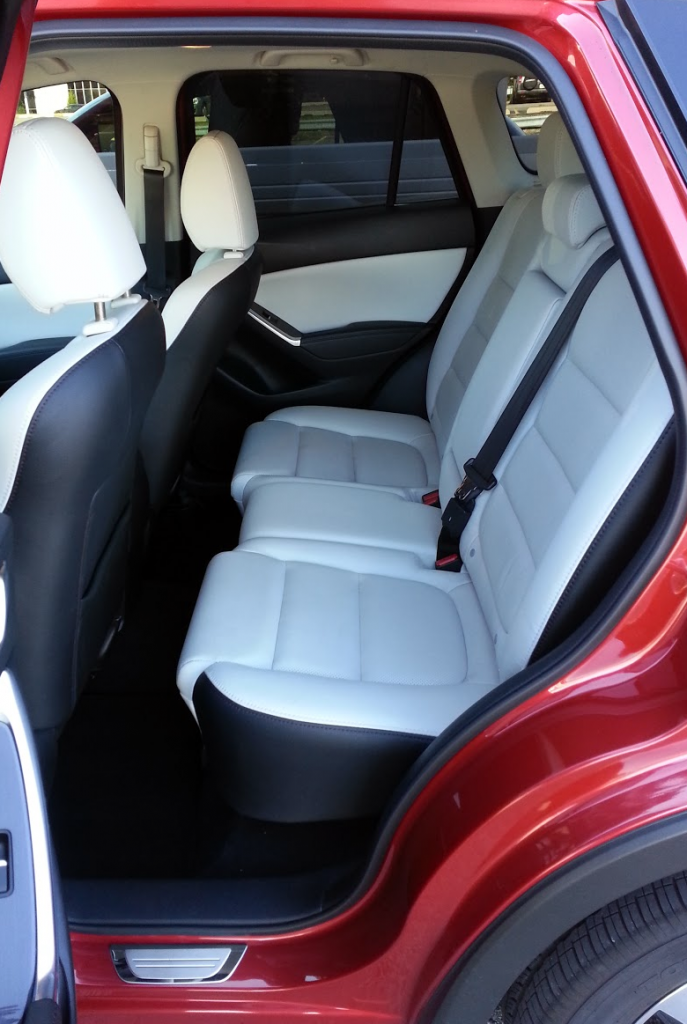
If you don’t have to go all-in, the CX-5 can be an affordable, comfortable, pleasant-driving, and useful vehicle—and probably all the more so once you figure out the Commander’s idiosyncrasies.
Test Drive: 2016 Honda HR-V EX-L

